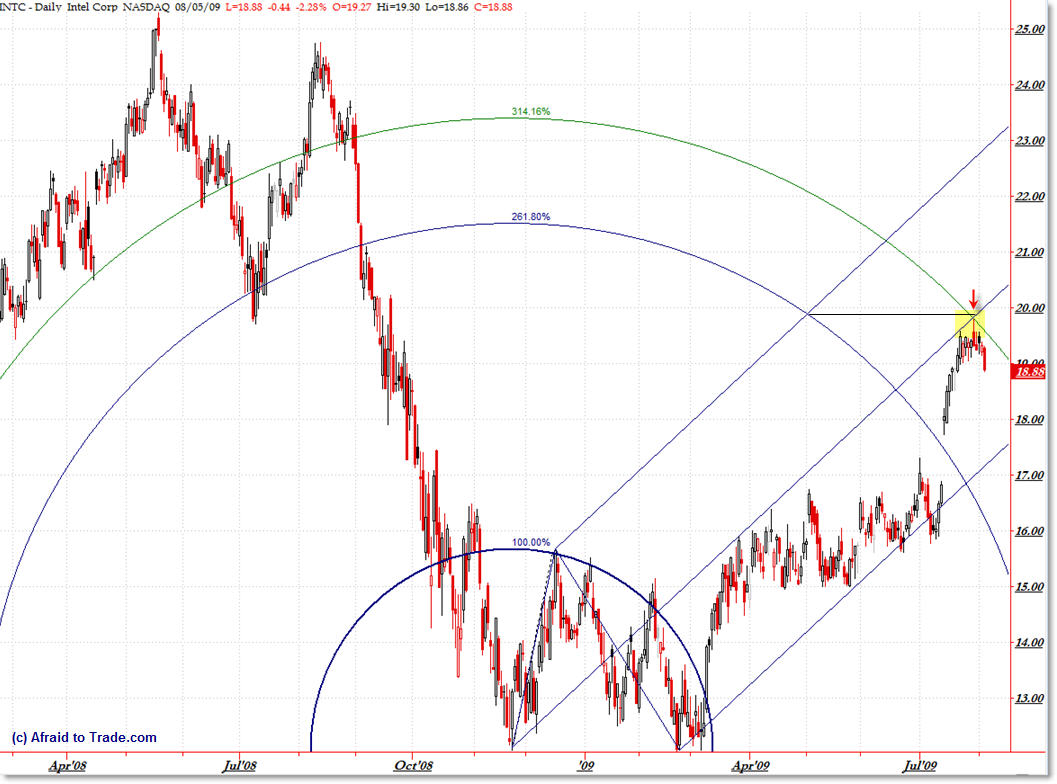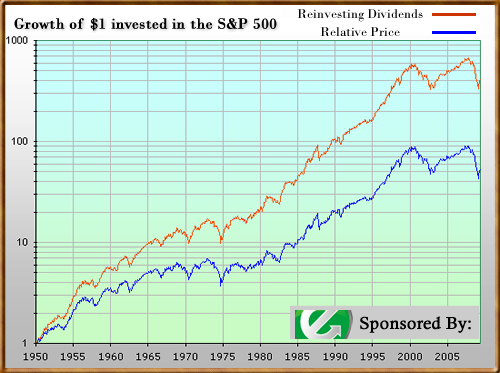Sensex down 389.80 points on Thursday (August 6, 2009)
-Heavy profit booking in frontline stocks
Sensex (^BSESN: 15514.03 -389.80 -2.45%) fell 389.80 points or 2.5% to 15514.03.
Nifty (^NSEI: 4585.50 -108.65 -2.31%) fell 108.65 points or 2.3% to 4585.50.
Mid Cap index fell 2.5%. Small Cap fell 1.3%.
BSE 500 was down 2.3%. Sensex losers: 28
All 13 BSE Sectoral indices posted losses.
Advancers: 1080, Decliners: 1614, Unchanged: 73
Advance/Decline ratio: 5:8
Sensex Day’s Range: 15969.81 - 15443.22
Nifty Days Range: 4718.15 - 4559.20
52-Week Range: 15973.10 - 7697.39
52-Week Change: -2.8%
All Time High: 21206.77 (10 Jan 2008)
Sensex losers included Tata Motors -6.9%, Hindalco -6.5%, JP Associates -5.5%, Maruti Suzuki -5.3%, Hero Honda -5.3%, ACC -4.9% and Sterlite Ind -4.8%.
Sensex gainers were: Sun Pharma +1.5% and Wipro +0.04%.
Auto index fell 4.4% led by Escorts -7.8%, Tata Motors -6.9%, Ashok Leyland -6.3%, Maruti Suzuki -5.3%, Hero Honda -5.3%, Amtek Auto -4.4% and Mah & Mah -4.1%.
Realty index plunged 3.7% helped by Indiabulls Realty -8%, Anant Raj Ind -7.6%, Sobha Developers -3.6%, HDIL -3.5%, Omaxe -3.4% and Phoenix Mills -3.3%.
FMCG tanked 3.3% supported by United Breweries -5.6%, ITC -4%, HUL -3.8%, Dabur India -3.7% and Colgate -3.4%.
Metal index tumbled 3.1% aided by Hindalco -6.5%, Ispat Ind -5%, Jai Corp -4.8%, Sterlite Ind -4.8%, Jindal Saw -3.9% and Tata Steel -3.9%.
Power index declined 2.3% assisted by Suzlon Energy -4.4%, Torrent Power -3.9%, Crompton Greaves -3.4%, Siemens -3.4%, GMR Infra -3.2% and Rel Infra -3%.
Other sectoral losers were: Consumer Durables -2.1%, Capital Goods -2.1%, IT -2.1%, Teck -1.9%, PSU -1.9%, Bankex 1.7%, Oil & Gas -1.6% and Healthcare -0.7%.
Volume shockers on the BSE:
Ispat Ind 25.30 million shares, FirstSource 20.25 mln shares, Mahindra Satyam 16.70 mln shares and Suzlon Energy 11.59 mln shares
Turnover:
Volumes crossed the Rs 1 lakh crore mark; total traded turnover was at Rs 1,02,020.54 crore as against Rs 87,766.43 crore on Wednesday. This included Rs 21,045.46 crore from the NSE cash segment, Rs 73,819.40 crore from the NSE F&O and the balance Rs 7,155.68 crore from the BSE cash segment.
Buzzers:
Roman Tarmat +20% at Rs 49.20, TTK Healthcare +20% at Rs 152.80, Jindal Photo +15.6% at Rs 139.20, TVS Electronics +14.8% at Rs 25.95, Hind Oil Exploration +14.4% at Rs 187.15, India Gelatine +12.5% at Rs 49 and Archies +11.6% at Rs 89.
Heavy Losers:
Saint Gobain -16.5% at Rs 20.45, REI Six Ten -13.1% at Rs 827.65, Arvind Chemical -11.6% at Rs 39, Pritish Nandy -11% at Rs 25, Subros -10.4% at Rs 34.95, Delton Cables -9.2% at Rs 69 and Galaxy Multimedia -9.1% at Rs 34.30.
Mid Caps gainer/losers:
In the midcap space, Hindustan Oil Exploration surged 14%. Sun Pharma Advanced, Shriram Transport, ING Vysya Bank and J&K Bank were up 5-7.5%.
However, REI Six Ten, Indiabulls Real, Anant Raj Industries, Sterling Biotech and IBN18 Broadcast were down 7-13%.
Small Caps gainer/losers
In the smallcap space, DCB, Shriram EPC, Vishal Info, Selan Exploration and VIP Industries went up 7.7-11%.
However, Escorts, Aegis Logistics, Kirloskar Ferro, Eveready Industries and ABG Shipyard were down over 7%.
Bharti Airtel fractionally steady:
Bharti Airtel, which is in exclusive talks with South Africa’s MTN aimed at a merger to create the world’s third-biggest telecoms firm, dropped 0.5 percent to Rs 399.30.
Tata Power in for Capex of $4.9 billion:
Tata Power Co plans to spend 236 billion rupees ($4.9 billion) in capital expenditure over the next three years, Chairman Ratan Tata said on Thursday at the annual shareholders meet. The stock ended lower 2 per cent to Rs 1286.85.
Government to release Rs 2546 crore under TUFS:
The government has released Rs 25.46 billion of subsidies to textile firms to upgrade their technology, the textile minister said on Thursday.
Minister said the fund under the technology upgradation fund scheme would reach beneficiaries in three working days. Maran also said a committee to formulate a national fibre policy has been set up and would submit its recommendations in three months.
Asian Markets:
Asian markets ended mixed. Shanghai Composite fell 2.11% and Straits Times was down 0.2%. However, Hang Seng gained 2% and Nikkei rose 1.3%. Jakarta Composite gained 1.85%. Kospi and Taiwan Weighted gained 0.3% each.
BOE extends bond purchases after recession deepened:
The Bank of England increased its bond purchase program by 50 billion pounds ($84 billion), saying the U.K.’s economic recession is deeper than policy makers expected.
The nine-member Monetary Policy Committee, led by Governor Mervyn King, kept the key interest rate at 0.5 percent and said it will increase its assets purchase program to 175 billion pounds.
European Markets:
European markets were quoting: FTSE 100 was +1.2%. The CAC 40: +0.7% and the DAX was +1%.
Crude:
Oil for August delivery was $71.70 a barrel on the NYME.
Concern:
Today’s fall worry analysts about the sustainability of the bull run in the near future.













 . Here are some highlights.
. Here are some highlights.

